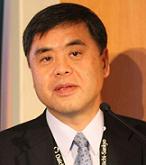Advertisment
ESC 2012 Report – Incidence rises in heart failure after Japan’s earthquake and tsunami

by Zara Qadir – On March 11, 2011, Japan was shocked by the most powerful known earthquake ever to have hit Japan. The earthquake and tsunami caused 15,861 deaths. TStrong psychosocial stress is considered to be a precipitating factor in acute coronary events. A recent Japanese study, published in the European Heart Journal, investigated the after-effects and impact of the earthquake on cardiovascular events.
Following an investigation of the ambulance records made by doctors in the Miyagi prefecture, close to the epicenter of the earthquake and where the damage was greatest (~60% of causalities), cardiologist Dr. Hiroaki Shimokawa (pictured) and colleagues from the Tohoku University Graduate School of Medicine at Sendai, Japan, found that the weekly occurrence of five conditions – heart failure, acute coronary syndrome (including unstable angina and acute MI), stroke, cardio-pulmonary arrest and pneumonia – all increased sharply soon after the earthquake occurred.
Such reactions – in ACS, stroke and pulmonary embolism – have been reported before, said Dr Shimokawa, in Japan, China and the USA. However, these studies reported only the short-term occurrence of individual CVD events, and the mid-term CVD effects of such great earthquakes remain to be elucidated. To this end, the study examined all ambulance transport records in the Miyagi prefecture from 11 February to 30 June for each year from 2008 to 2011 (ie, four weeks before to 16 weeks after 11 March, a total of 124,152 records). Incidence records from before, during and after the earthquake disaster were compared, the aftershocks counted and recorded according to a seismic intensity of 1 or greater.
The number of aftershocks in the Miyagi prefecture was frequent during the six weeks after the earthquake, and the second peak was noted as a large aftershock on 7 April 2011 (magnitude of 7.0). Dr. Shimokawa performed retrospective analysis of the clinical data from patients with AMI admitted to the hospital during three-week period between March 11 and March 31, 2011 (Disaster group) by comparing those patients during the corresponding time period of 2010 (Non-Disaster group). The number of events in the three weeks after and before the earthquake in 2011 was compared with the numbers of events the corresponding weeks in 2010 and 2009.
Compared with the previous three years, the significant increases in the occurrence of heart failure and pneumonia were steadily prolonged for more than six weeks after the tsunami struck (see Figure 1). On the other hand, the incident increases in stroke and cardio-pulmonary arrest followed the pattern of the first and aftershock seismic peaks. The rapid increases in the occurrence of acute coronary syndromes and cardio-pulmonary arrest was followed by a sharp and significant decline. The number of patients with acute myocardial infarction in Disaster group increased by about 3-fold (22 in Disaster group vs 7 in Non-Disaster group). Interestingly, said Dr Shimokawa, age, sex or residence area did not significantly affect the occurrences of CVD during or following the tsunami.
“To the best of our knowledge,” he added, “this is the first report to describe the mid-term course of major cardiovascular events and pneumonia after a great earthquake in a large population. In particular, our findings provide the first evidence that the incidence of heart failure was markedly increased over a long period afterwards.” Prevalence of pneumonia, a well known risk factor for deteriorating heart failure, was significantly increased.
The Tohoku University study also found – as reflected in self-monitoring measurements – that blood pressure was significantly elevated after the Earthquake. However, transport disruption following the tsunami interrupted delivery of regular medications, such as antihypertensive or antithrombotic drugs, and this may have contributed to the increased cardiovascular events. There was also an increase in the occurrences of ventricular tachyarrhythmias in patients with implantable cardiac defibrillators.
“Taken together,” said Dr Shimokawa, “we consider that discontinuation of drugs, activated sympathetic nervous system, rising blood pressure, and the increased occurrence of tachyarrhythmia and infections were all involved in the increased occurrence of cardiovascular events after the Great Earthquake of Japan.”
This study does suggest that patients with AMI after the Great East Japan Earthquake were subject to strong psychosocial stress, and that psychological stress brought on by such disaster could trigger cardiac events and following cardiac death.
Abstract: http://spo.escardio.org/abstract-book/presentation.aspx?id=106985





